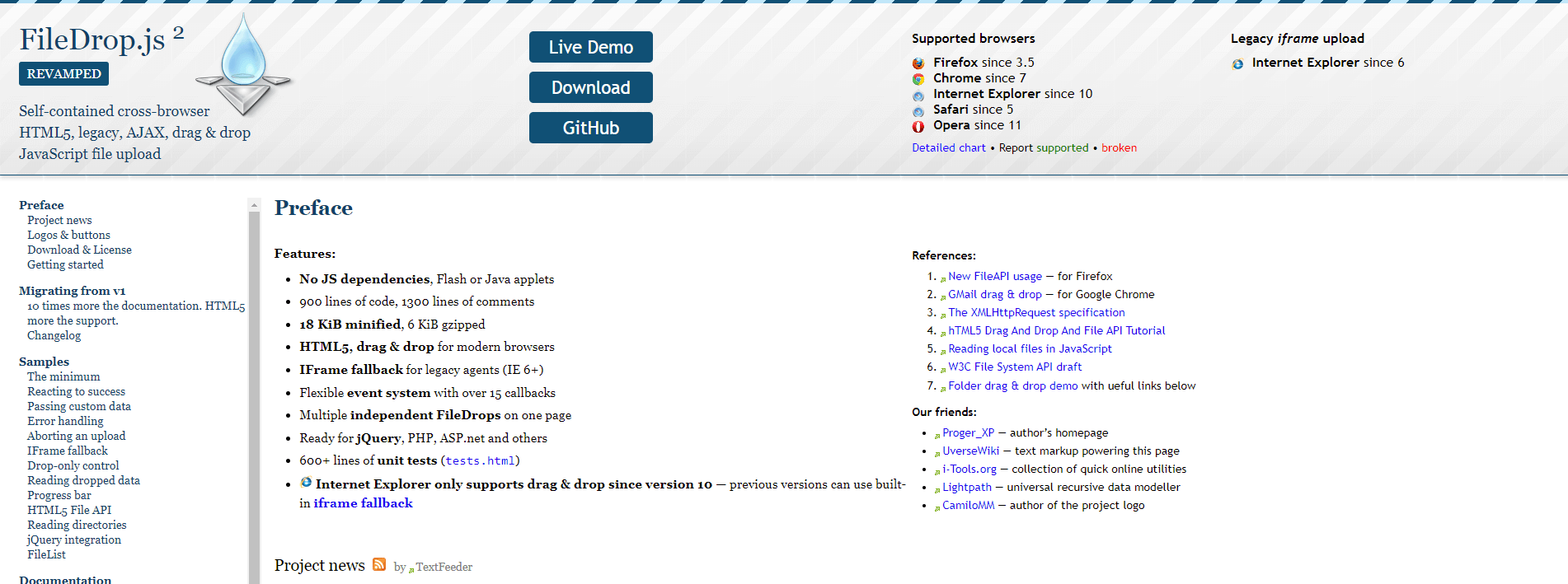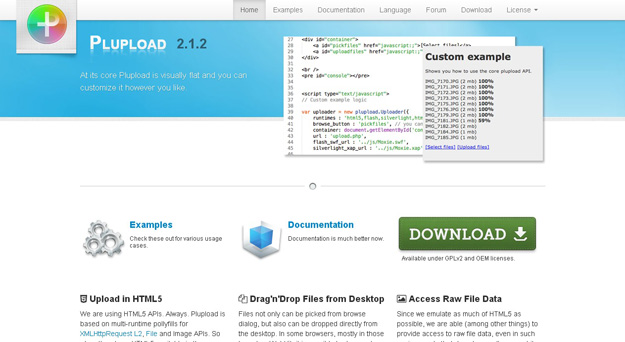
Thus, we will enclose both parts in a tag. Server response received after uploading file via iframe. File info is normalized (cross-browser) and ready to send. Files were dropped or selected using the Browse button. Dragged object has left the drop zone or document. Since state changes re-render HTML, setting the value attribute to "" resets the input tag's value on each files state change.īefore we write the HTML for the second part, keep in mind that React only allows for returning one parent element from a component. User drags an object into the drop zone ( Firefox) or document ( Chrome ). This bug occurs because when we remove a file, the input tag's value does not change. Later, we will see that the files state only changes once the value of the input tag changes. Setting the value attribute to "" fixes an edge case where uploading a file right after removing it does not change the files state. Setting the title attribute to "" gets rid of the text that shows up by default when hovering over the input tag ("No file chosen"). “Why are we setting the title and value attribute to ""?” This was done so that we can add attributes to the file input tag from the parent component via props.
JS FILEDROP GET FILE NAME CODE
In the code above, we are taking that otherProps variable and passing it to the file input tag. any prop other than label, updateFilesCb, maxFileSizeInBytes). This process of sending data from the child to the parent can be further explained at destructuring, we can now add the props like so:Įarlier, we discussed that any props that we don't destructure will be assigned to the otherProps variable (i.e. As a workaround, we will pass a function declared in the parent component and the file upload component will call that function with the files state as an argument. Since React has unidirectional data flow, we cannot easily pass data from the child component (file upload component) to the parent component. “Why do we need use a callback function to send the files state to the parent component?” Thus, for the parent component to also store the uploaded files, we need the file upload component to send it. Typically, the file upload component will be used in a form and when working with forms in React, the component stores the form data in the state. “Why do we need to send the files state to the parent component?” A callback function used for sending the files state to the parent component.For preventing files above the specified size from being uploaded.Determines the label of the component (e.g.The component will have the following props:
JS FILEDROP GET FILE NAME UPDATE
The useState hook returns a stateful value which is the same as the value passed as the first argument, and a function to update it.įor our purposes, we will need state to keep track of the uploaded files. Since we are creating a functional component and need to use state, we will use the useState hook. Lastly, within the file-upload folder, create 2 new files. This makes it easier to find the logic and styles for each component.įollowing this convention, create a components folder in the src folder and then a file-upload folder within the components folder.
JS FILEDROP GET FILE NAME INSTALL
To install them, run npm i styled-components node-sass.Ī good convention for structuring folders and files is to create a components folder that has a folder for each component.

preventing user from uploading files bigger than a specified size.removing files in the "To Upload" section.displaying image preview for image files.drag and drop without using any libraries.So, I thought I'd share how I made the component and show a typical use case for it.įigure 1: File upload component used in a form (example use case)įigure 2: Responsive file upload component


Most of the file upload components online used libraries such as react-dropzone to support drag and drop. $('.upload-area').While working on a React project, I implemented a responsive file upload component that supports drag and drop without using any libraries. The below code stops the page from redirect when the file drop on the page. Initialize $return_arr Array with file name, size, and location.Ĭompleted Code $filename,"size" => $filesize, "src"=> $src) Upload file to upload folder and check file is image or not. Use upload folder to store files and also added default.png image which uses as a thumbnail for non-image type files. I am using this as file uploading area where the user can drag and drop the file or open File Dialog Box by clicking on it.ĭrag and Drop file hereOrClick to select fileĬreate upload folder and upload.php file. I created a which contains the file element and a container.


 0 kommentar(er)
0 kommentar(er)
